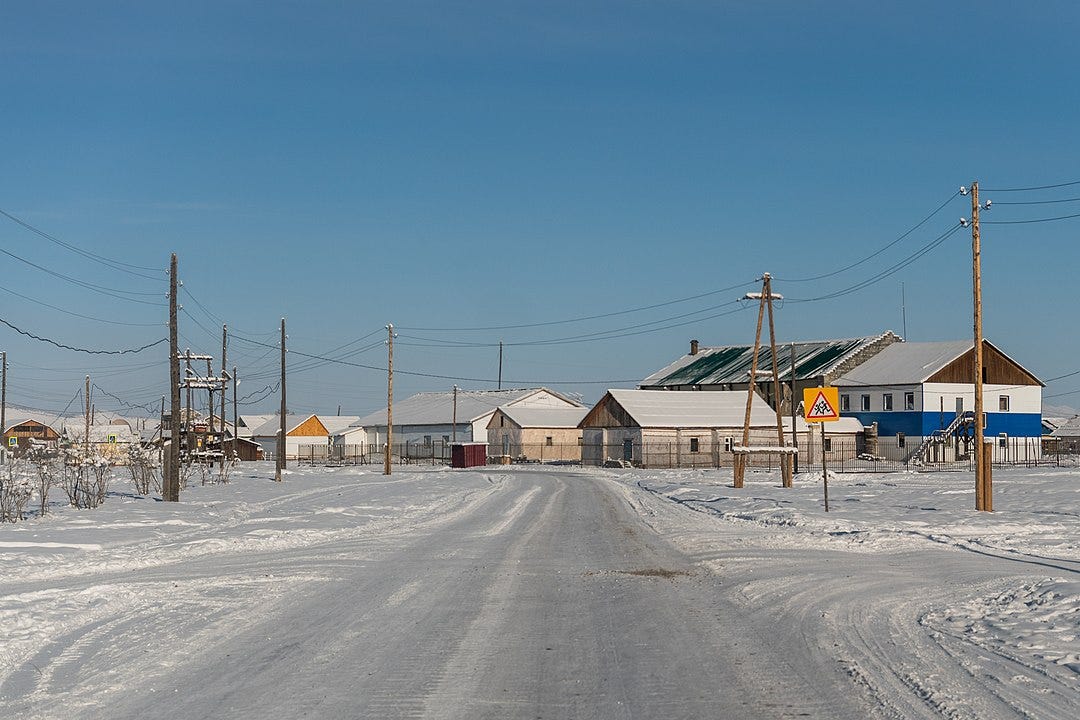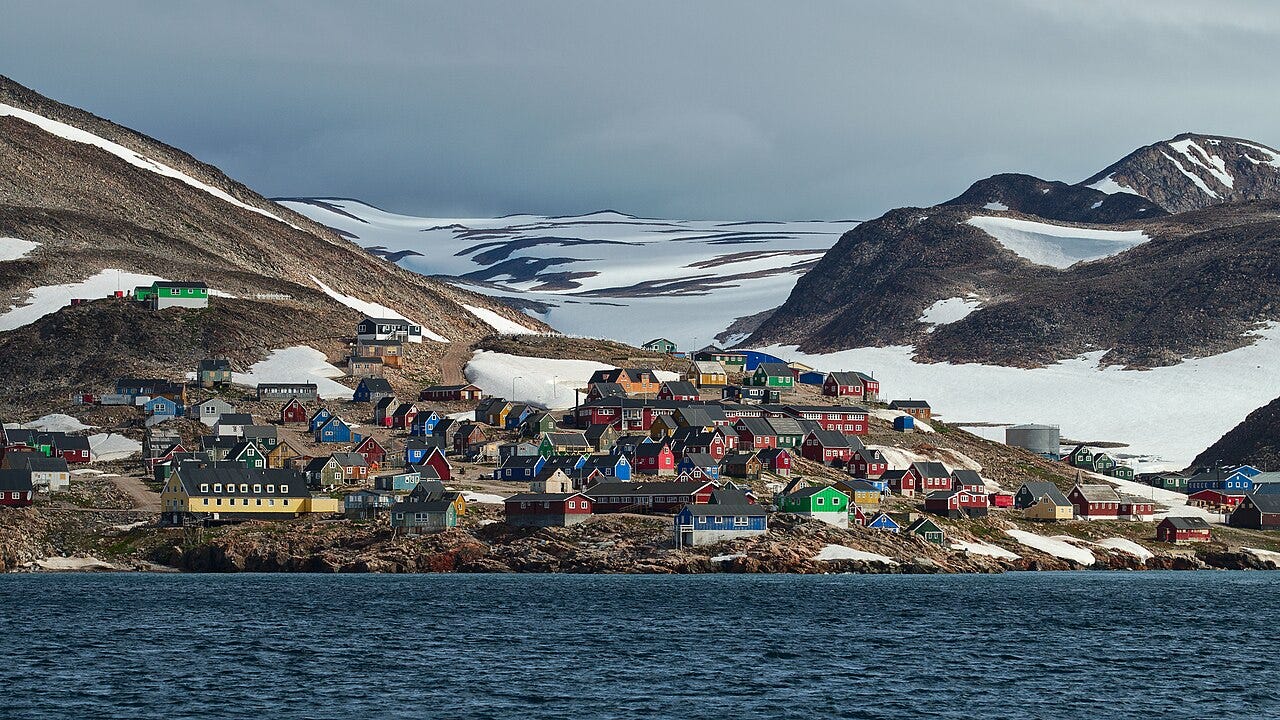The most isolated settlements in the world
They're not just far away... they're advanced far away

Quick note! You may notice that this article is coming a day later than normal. I’m changing my weekly article release time. Mostly so it doesn’t line up exactly with my weekly YouTube video. I figured… why am I asking people to engage with me twice on two separate platforms at the same time? No idea! And so here we are with a now Wednesday morning article. Alright, that’s all. Article time!
In an age of instant communication and global travel, the idea of true isolation can feel impossible. We can literally cross continents in hours and speak to someone on the other side of the planet in seconds. But there are communities that exist that don’t have these same “luxuries” (they feel more like burdens most days). These are the most isolated settlements in the world, places where distance is measured not in miles, but in days of difficult travel, and where life is shaped by the reality of being alone.
So what are these places and why do they exist at all?
The Lonely Atlantic Outpost

Imagine being on a ship in the South Atlantic, sailing for a week from the nearest city, Cape Town. Finally, a single, colossal volcanic peak emerges from the mist, its slopes plunging dramatically into the ocean. This is Tristan da Cunha, the most remote inhabited archipelago in the world. Its main settlement, Edinburgh of the Seven Seas, is home to fewer than 250 people. The nearest inhabited land is Saint Helena, over 2,400 kilometers (1,500 miles) away, which itself is famously remote. South America lies over 3,200 kilometers (2,000 miles) to the west. But unlike Saint Helena, there is no airport here. You can only arrive or depart by boat… which is infrequent!
So why would anyone choose to live here? The answer lies in the geopolitics of the 19th century. After Napoleon Bonaparte was exiled to Saint Helena, the British feared the French might try to rescue him. In 1816, they established a garrison on Tristan da Cunha to guard the sea lanes. When the military mission ended, a Scottish corporal named William Glass, along with his family and a few others, asked for permission to stay. They saw potential in this lonely rock, a chance to build a self-sufficient life through farming, fishing, and trading with passing ships. Over the next two centuries, castaways, shipwrecked sailors, and a handful of adventurous settlers joined them, creating a unique community with a distinct dialect and a deep, unshakable connection to their island fortress.
The Arctic Frontier
Far to the north, on the desolate eastern coast of Greenland, lies the settlement of Ittoqqortoormiit. The name itself is a mouthful (I don’t know how to pronounce it so don’t ask), and its location is even more forbidding. For nine months of the year, the surrounding sea is completely frozen, making access by ship impossible. The town is flanked by the world's largest national park and the world's longest fjord system, a landscape of breathtaking but unforgiving beauty. Reaching it requires a flight to a nearby airstrip followed by a helicopter ride or, in the brief summer, a boat journey.
Unlike Tristan da Cunha's gradual, almost accidental settlement, Ittoqqortoormiit was founded with a clear purpose. In 1925, Danish colonizer Ejnar Mikkelsen brought about 80 Inuit settlers here from more populated areas. The official reason was to provide them with better hunting grounds, as the region teemed with seals, walruses, polar bears, and narwhals. However, the underlying motive was political. At the time, Norway was challenging Denmark's claim to Northeast Greenland. By establishing a permanent, inhabited settlement, Denmark solidified its sovereignty over the vast, mineral-rich territory. Ittoqqortoormiit was, in essence, a strategic move, a human flag planted on the frozen edge of the map to secure a nation's claim.
The Pole of Cold

Deep in the heart of Siberia lies a place that seems to defy human habitation altogether. Oymyakon, a village in Russia's Sakha Republic, is widely recognized as the coldest permanently inhabited place on Earth. Winter temperatures here regularly plummet below −50C (−58F), with the record standing at a literal bone-shattering −71.2C (−96.2F). Here, frostbite is a constant threat, cars are left running all day to prevent their engines from freezing solid, and even breathing the frigid air can feel like swallowing needles.
The reason for Oymyakon's existence is found in its name, which ironically means "non-freezing water." The village is situated near a thermal spring that provided a crucial resource for reindeer herders who would stop there to water their flocks. For centuries, it was a seasonal stopover, not a permanent home. This changed during the Soviet era. As part of a policy to control nomadic populations and collectivize the region's resources, the government forced the herders to settle. Oymyakon was transformed into a permanent village, a way for the Soviet Union to control vast Siberia. And the people who live there today are the descendants of those who adapted to a sedentary life in the most extreme cold imaginable.
There are more incredibly isolated towns, of course. The Pitcairne Islands and Easter Island in the Pacific Ocean are good examples. And, of course, there are distant and mysterious indigenous tribes still living in the Amazon Rainforest that we know basically nothing about. Oh and we can’t forget the Sentinel Islands near India which isn’t too far from anything in terms of distance, but whose people will kill anyone else who steps foot on the island. But these three are my current favorites because they also have such fascinating stories behind them



Nice pics, great article. Far, far away regions could be on the opposite side of the same North American continent, in a familiar country of the US, geographically.
Namely, Maine in the north east of America and also south west portion, namely, Los Angeles's county of Santa Ana. Both regions will be the only two to receive adequate amounts of rainfall in the next couple of decades.
Denis CA de Souza,
Our Weather of Dramatic Changes